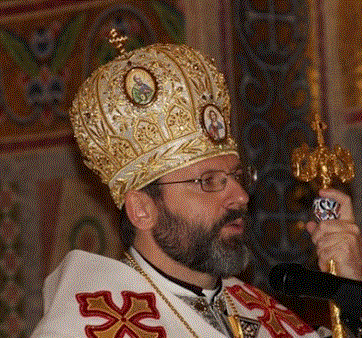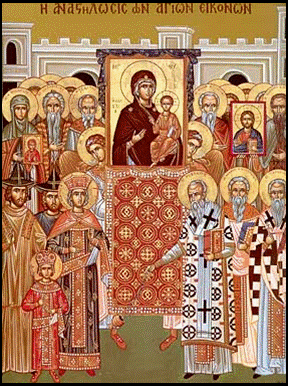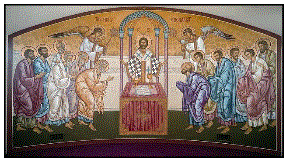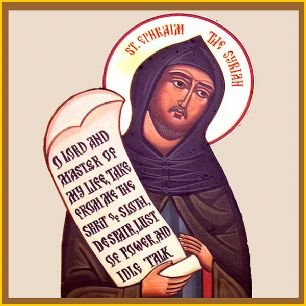Most Reverend Metropolitans and Bishops! Very Reverend Priests, Religious, Monastics! Dear Brothers and Sisters in Christ!
 Our Church, our Faithful and our entire Ukrainian People enter into the Great Fast this year with feelings of pain, fear, suffering and trembling hope. We have experienced one of the longest and most terrible winters in the history of our people – a winter in which we profoundly and personally felt the darkness of sin, and we saw evil that garishly expressed itself in our modern history and bore its murderous interior for all to see. Sin, in its ugly, noxious nature, rose up before us.
Our Church, our Faithful and our entire Ukrainian People enter into the Great Fast this year with feelings of pain, fear, suffering and trembling hope. We have experienced one of the longest and most terrible winters in the history of our people – a winter in which we profoundly and personally felt the darkness of sin, and we saw evil that garishly expressed itself in our modern history and bore its murderous interior for all to see. Sin, in its ugly, noxious nature, rose up before us.
At the same time, this is the winter of our national unity, solidarity, openness to our neighbour, and the continuation of our exodus from the home of slavery. On the ‘Maidan’, we understood the true sense of sacrifice, dedication and mercy. For many this was a time of profound self-realization and conversion to the Lord. The experience of the last 90 days must become for us a signpost for the next 40 days and for the rest of our life.
During the Great Fast, we will especially remember, together with our deceased family members, the sacrifice of the martyrs of the “Heavenly Legion” – those that gave their lives for the victory of good over evil and of truth over injustice. We will also remember the selfless dedication of those people who stood there over these last months in the most terrifying and freezing-cold nights on the Maidan united in prayer. With gratitude, we will remember all Christians and people of good will in Ukraine and throughout the world – for their prayer and moral and material support.
At the same time, we will always keep in mind that the results of this winter were not the accomplishment of human hands: “if it had not been the LORD who was on our side, when men rose up against us, then they would have swallowed us up alive (Psalm 124: 2-3). We became witnesses and conveyers of the mystery of the actions of God’s grace, witnesses that, “what is impossible for man, is possible for God” (Luke 18:26).
The Great Fast continues that which began on the Maidan, and adds to it new spiritual substance. Contemplating the pure sacrifice of the “Heavenly Legion” and the dedication of the hundreds of thousands of people, each of us should evaluate our lives differently: seek greatness in your consciousness and in your mystical being, open your life to others – to God and your neighbour, cleanse from yourself everything that limits us and leads to sin. On this path of conversion and cleansing, our Church prays with the words of venerable Ephrem, “Lord and Master of my life! Remove from me the spirit of laziness and indifference, lust of power and idle chatter. Rather grant to me, Your servant, the spirit of purity, humility, patience, and love. Yes, O Lord and King, let me see my own sins and not judge my brother or sister, for it is You who are blessed forever!”
This year in particular, the Great Fast challenges Ukrainians to overcome the sins of hatred and distrust. This is especially the case for those who have been entrusted with the helm of the nation. It is difficult for us to trust the new leadership today, because we have experienced authorities that enslave, humiliate and kill. Thus, it will take a great effort to overcome this sin. The first step in this direction must be forgiveness. A good opportunity for this is “Forgiveness Sunday” which opens the way to reconciliation with God and neighbour. Together with this, we must remember that trust toward a restored authority cannot be blind and should usher in an active sharing of responsibility for that which happens on our country. This shared responsibility must emanate from each of us: with responsibility for our own household, our village or city, and for our country – remembering that every citizen must not demand of oneself any less then he/she would demand of others.
The insistent reminder about this responsibility will be the sacrifice of those innocent people killed – whose memory no one dare stain by their own selfish purpose or political conduct. Let us not squander this God-given opportunity that opens for us new possibilities, a new way of living, so that, according to the words of the Apostle to the nations, we would be made, “worthy of the Kingdom of God, for which we are suffering” (cf. 2 Thessalonians 1:5).
How will we accomplish this? The Great Fast is the way to the Resurrection. Our Saviour, Who, “came that we would have life and have it abundantly” (John 10:10) proposes for us appropriate means, in order that our activity would be life-giving. He calls us to direct ourselves toward the Lord’s Passover, to pass through the pilgrimage from sin to love in order to be forever a “new creation in Christ” (cf. 2 Corinthians 5:17).
In spite of the uniqueness of the Lenten period for our people this year, it always is a period of spiritual struggle. For we are not contending against flesh and blood, but against the principalities, against the powers, against the world rulers of this present darkness, against the spiritual hosts of wickedness in the heavenly places” (Ephesians 6:12). The spiritual combat to which the Church calls us during the Great Fast, has concrete dimensions according to the words of the Prophet Isaiah, “”this is the kind of fasting that I want: to loose the bonds of wickedness, to undo the fetters of the yoke, to let the oppressed go free, and to break every oppression. Share your bread with the hungry, and invite the homeless poor into your house; when you see the naked, to cover him, and do not refuse to help your own people? (58, 6–7).
We must fight for truth and righteousness, confirm the God-given dignity of every person, maintain peace in our souls and our country, promote reconciliation and repentance, and aid in the healing of the spiritual and physical wounds by which Ukrainians have been injured. In particular we call everyone to solidarity in tending to the families of those killed and wounded and those that remain traumatized body and soul.
Difficult and complicated times may await us. We must be prepared for economic sacrifices, which will demand from our part patience and perseverance. Let us learn to carry our daily Cross steadfastly and without complaint, even when we will find ourselves without that which we consider most indispensable. Let this be our fast – a fast that raises hope for a better future for Ukraine, which, after the winter, will come into its springtime and will yield its fruit.
To experience the Great Fast most profitably, we propose to all of our Faithful to continue their prayer and fasting for the Ukrainian people according to the intentions that we give in the supplement.
We call upon everyone to dedicate themselves to work and prayer, in fasting and charity. “May the God of peace himself sanctify you totally; and may your entire being – spirit and soul and body – be kept sound and blameless for the coming of our Lord Jesus Christ.” (1 Thessalonians 5:23)
On behalf of the members of the Permanent Synod of Bishops of the Ukrainian Greco-Catholic Church
+ SVIATOSLAV
Father and Head of the UGCC
Issued at Lviv-Briukhovichy 28 February 2014 A. D. Cheesefare Friday
INTENTIONS FOR PRAYER AND FASTING DURING THE GREAT FAST
Monday – for the Supreme Council (i.e. Parliament) of Ukraine and the upcoming Presidential election
Tuesday – for the new government of Ukraine and its successful service
Wednesday – for the Army of Ukraine
Thursday – for the Police and other law enforcement agencies
Friday – for those wounded on the Maidan and their families
Saturday – remembering the deceased, especially those killed on the Maidan
Sunday – for the unity and integrity of Ukraine




